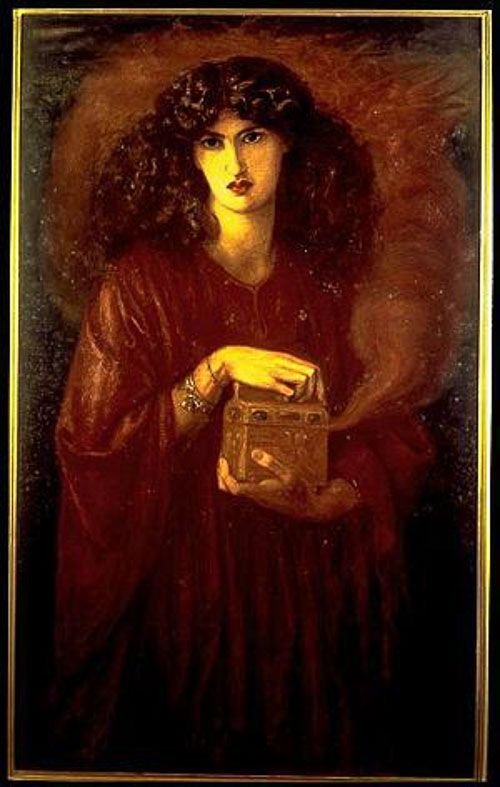Editors’ Introduction for NANO Special Issue 11: Economies of the Gift in an Age of Austerity
by J.P. Craig and Jennie Stearns
Published July 2017

Giving requires calculation; one must consider the recipient’s needs and one’s own capacities. And though the hallmark of the gift is that it, unlike more formal modes of exchange, is non-contractual, gifts are often, if not always, given with expectation of a return gift or an increase in prestige for the giver. And defaulting on this expectation comes with a social cost. Gifts, then, are not so much non-contractual as operating under broader, even ill-defined, terms of social contract. All the calculations leading up to and following a gift exchange reveal the tacit rules that govern a society. The gift is an object and a process. The gift moves, and it also—as a keepsake or memorial—stays put. The gift in its motions outlines the society. That is, gift exchange is what anthropologist Marcel Mauss calls a “total” practice that springs from and enacts a near-complete range of a society’s values. This is why the flow of gifts often receives such close attention.
Gifts are especially scrutinized in the realm of politics, as for example when, on the day before his June 8, 2017 testimony to the Senate Intelligence Committee, former FBI director James Comey released a written statement describing a series of interactions he had with President Donald Trump. One of these meetings, a dinner on January 27, had made him particularly uncomfortable because, Comey explains, “the one-on-one setting, and the pretense that this was our first discussion about my position, meant the dinner was, at least in part, an effort to have me ask for my job and create some sort of patronage relationship” (par. 12). Comey’s concern that the prospect of such “patronage” would pose a threat to “the FBI’s traditionally independent status” (par. 12) is a familiar one to gift theorists. Patronage is problematic in employment situations because in that context, it seems like an intrusion of the personal into the market. When it comes to art, however, patronage is too much of the market's intrusion into the social and personal realm of the gift.
Patronage is thus an instance of the many ways in which gift exchange is odd, even paradoxical. As Ralph Waldo Emerson wrote in his essay “Gifts”:
We wish to be self-sustained. We do not quite forgive a giver. The hand that feeds us is in some danger of being bitten. We can receive anything from love, for that is a way of receiving it from ourselves; but not from any one who assumes to bestow. (536)
For Emerson, the gift is about love; for Mauss, the gift is about social power. The gift invites prolific interpretation so much so that, for Georges Bataille, giving is an expenditure in which excesses of wealth and energy are either sacrificed in the potlatch of war or formed into art. For Lewis Hyde, the gift takes the form of permission to create, and creative work is the artist’s return gift. Jacques Derrida, in his later years, finds that the gift is about time: when one gives a gift, one gives the delay in which to ponder the reception or to expect the return gift. More recently, feminist theorists such as Tracy McNulty and Rosalyn Diprose have explored ways in which the gift and generosity negotiate relations between the self and culturally different others. Such scholars, like Mauss himself, take the gift to be a total phenomenon, so examining gift exchanges allows us to access and assess a broad range of cultural values. The contributors to this issue of NANO rely upon these and other understandings of the gift to explore how generosity functions in the face of scarcity—scarcity of time, resources, mutual tolerance—to strengthen, or weaken, communal bonds.
The gift of patronage, in particular, is a central concern of several of the essays in this issue of NANO. For example, Síofra McSherry examines the patronage relationships of modernist poet Marianne Moore as a gift economy in which Moore’s principled individualism led her to resent or forego gifts proffered by both patrons and suitors—until one such gift, the publication of her 1921 Poems by Egoist Press, was forced upon her. In exploring how Moore negotiated the risks and gendered implications represented by patronage, McSherry shows how patronage can go wrong, how gifts can be coercive—and how solitude and refusal can be a gift to oneself and one’s art. If Comey presents a canary in the coalmine, McSherry sees Moore as a fox refusing to jump for grapes she believed sour. Similarly, in her analysis of another modernist writer, Rebecca Colesworthy describes how Virginia Woolf’s A Room of One’s Own illustrates concerns common to both discourses about the gift and debates about the creative economy. Working from Woolf’s consideration of the woman artist’s “gifts” and her material conditions, Colesworthy finds that Woolf argues against allowing the fragility of artistic autonomy to become an excuse for “precarity.” Colesworthy’s Woolf becomes a model for artists working today who are often expected to work for free, to give away their gifts.
This issue of artistic autonomy—of the ways in which the same paradoxes and obligations of gift exchange that risk ensnaring a recipient in indebtedness also offer an artist a means of negotiating the creative economy—is just as relevant today as it was for Moore and Woolf. But while the studies of Woolf and Moore presented in this issue address the importance of the artist’s independence, Jacqueline O’Dell finds that interdependence is a more pressing issue for novelist Dave Eggers, the founder of the website McSweeney's and several nonprofits. Examining Eggers’s practice of publishing second editions of his works which contain additional framing materials, O’Dell sees Eggers responding to the nearly clichéd problem that there seems to be no true gift—that all gifts come with implicit strings attached. Eggers’s second editions hedge on the surplus value of an ongoing circulation of renewed material to sustain a symbolic and material gift network. O’Dell argues that this foregrounding of mystification and uncertainty aids critics’ attempts to position Eggers within the movements of new sincerity and post-irony. Like Colesworthy, O’Dell presents hoped-for or functioning minority communities that rely on gift exchange to provide self-definition and cohesion.
Offering another perspective on how artists might respond to similar issues of exchange and community is Graham St John’s account of the annual Burning Man festival. Burning Man, in his analysis, is an attempt to explicitly and self-consciously embrace a gift economy to re-define artistic patronage and to negotiate, and possibly reconcile, the tensions between art’s functions as both gift and commodity. Implicit in St John’s analysis is an understanding of the gift as not only a potential counterforce to the commercialization of art (and even of Burning Man itself) but also a means of creating a community. Tracing the ways in which Burning Man’s founders and organizers have self-reflexively embraced Hyde’s model of the gift in defining the event’s core principles, St John examines their efforts to forge and maintain a form of patronage that is a communal effort—one that demands that participants contribute as well as consume, one that enables participants to become simultaneously both philanthropist and artist. Burning Man is thus, in St John’s analysis, an example of Hyde’s concept of a “gift community,” a community that is produced and defined by its members’ recognition of a shared obligation to give, accept, and return each others’ gifts.
Scott Thomas Gibson, Nao Nomura, and Anushka Peres each point to the gift’s potential to exclude and/or to serve as a practice of resistance, one that marginalized groups use either to resist exclusion and marginalization or to negotiate and manage interactions with commodity culture while reinforcing their own gift communities. Implicit in their articles is the concept of what anthropologist Marshall Sahlins termed “generalized reciprocity.” Although all gifts, including ones to friends and family, generate counter-obligations, within a functioning community, the expectation of reciprocity remains unacknowledged. The gifts exchanged by those who willingly recognize themselves as members of a community go unmarked and misrecognized because it goes without saying that they can count on each other to return each other’s favors indefinitely. Exchanges of gifts and expectations for reciprocity thus serve as barometers of social distance and of the health of a community.
In Gibson’s reading of Earnest Gaines’s A Lesson Before Dying, the possibility and the denial of gift exchange define communities. The gifts that slaves—and, later, blacks in the Jim Crow South—received from whites were clearly not the sort of reciprocal gifts that define a functioning community. Instead, those who gave them explicitly insisted that they were gifts necessitating returns of gratitude. Furthermore, gifts indicate exclusion, not inclusion, when they expressly deny and negate recipients’ desire and ability to reciprocate. For whites, it was ideologically safer to imagine being motivated not by any sense of debt or guilt, but by a desire, or even a duty, to act with benevolence and generosity. Thus, many whites were inclined to regard as gifts the basic necessities and occasional favors provided to slaves or, later, black neighbors. This exclusion of blacks from reciprocal gift exchange contributed to a construction of them as chattel. But if gift exchange is a cause of this communal exclusion, it must also be part of the cure, as Gibson illustrates in his analysis of how gift exchange draws the condemned back into the community by first restoring his humanity. Gibson’s reading of A Lesson Before Dying might thus be said to offer an illustration of the gift’s ability—as commonly noted by gift theorists—to produce social bonds that can outlast even death.
That the gift—like any economic transaction—can simultaneously have both market and social significance is apparent in Nomura’s examination of the popularity of direct home sales among the Amish, despite their more general prohibitions against participation in consumer culture. Nomura finds that an emphasis on gift exchange enables Amish women to participate in contemporary consumer culture while simultaneously preserving a distance from that culture. When gift exchange is understood as a practice that forges communities and demarcates their boundaries, it can more easily be recognized as an economic practice that is embedded within a market economy, rather than as a “primitive” form of exchange that exists in opposition to or as an alternative to commodity exchange. To the Amish, Nomura finds, direct home sales parties provide opportunities to offer and reciprocate mutual aid, which enables participants to regard them as something other than a consumption activity that would in any way challenge their communal religious identity. For the Amish, gift exchange, it might be said, is a practice that transforms commodities into objects safe for domestic consumption.
Like Nomura, Peres describes how a particular practice of gifting enables participants to construct a self-image that enables them to negotiate the tensions between their economic and social selves. And like Gibson, Peres demonstrates how one-way gifts—in this case, microloans that allow donors to a charity to imagine their generosity as unreciprocated—ultimately work to reinforce the interests of a larger capitalistic culture. Examining photographs on the Whole Planet Foundation (WPF) website, Peres describes how they encourage potential WPF donors, as well as Whole Foods shoppers to view themselves as model citizens and how, in doing so, they help sustain a culture of charity, rather than challenge structures of inequality. Despite the WPF’s efforts to suggest that donations benefit particular individuals, the reality is that contributions go to financing the non-profit organization itself. One byproduct of this construction of an imaginary person-to-person connection for viewer/donors is the construction of microloan recipients as individuals incapable of returning gifts, much like the Jim Crow-era blacks Gibson describes.
The gift’s importance as a source and measure of social (in)equality is made further visible in Elizabeth Gregory’s contribution to this issue. Gregory points to the ways in which groups can be excluded from the larger community or dismissed as unable to contribute when the dominant culture gets to define the gift to its own advantage. Considering the impact women’s fertility has in patriarchal society, Gregory finds that anti-reproductive-choice arguments are founded on a key reversal. Basing restrictions of birth control and abortion on the assumption that the unborn, potential child has been given an individual gift of life ignores the fact that human life depends on an ongoing gift of parental, primarily maternal, energy and resources. The paternalist focus on the individual obscures the work of the family and particularly of the mother. This focus legitimates the coercion of women’s gift to society in the form of reproductive labor.
In our culture, all material gifts are generally first commodities and all commodities potential gifts. But is it really that simple? The thread that we have tried to weave throughout this introduction is that any time one mixes social codes with offerings, social feelings will emerge. If an object can be either a gift or a commodity at different times, then a transaction is defined not by the objects exchanged but, at least in part, by the social relations it represents. The boundary between gift and commodity exchange demarcates transactions between those who recognize an ongoing relationship with each other as distinct from transactions between those who do not. Gift exchange thus plays a critical role not only in the maintaining of relationships between friends and family, but also in the defining and even the formation of larger communities. For this reason, they must also be viewed critically: the gift that binds might also be a gift that simultaneously excludes or one that, as Comey recognized, carries with it the risk of subordination. Our introduction and the whole of Special Issue 11 is also a gift. NANO: New American Notes Online is committed to providing (gifting) cutting edge humanities scholarship free of charge to anyone who has access to the web. Which means, of course, that nothing is free. Enjoy!
We would also like to express our gratitude to NANO’s editor Sean Scanlan for the opportunity to work on this special issue. We are indebted to him for all that he has taught us and for the endless patience he has shown along the way. Thanks too to all who contributed to this issue—we appreciate your sharing your ideas with us and NANO’s readers.


